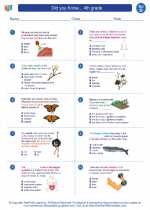Key Concepts in Bioremediation
- Biodegradation: The breakdown of pollutants by microorganisms into simpler, less harmful compounds.
- Biostimulation: The process of enhancing the growth and activity of natural microorganisms that can degrade contaminants.
- Phytoremediation: The use of plants to remove, degrade, or stabilize contaminants in the soil or water.
- Bioreactor: A controlled environment where biological processes are used to treat contaminated materials.
Factors Affecting Bioremediation
Several factors can influence the success of bioremediation:
- Environmental Conditions: Factors such as temperature, pH, oxygen levels, and nutrient availability can impact the activity of the organisms involved in bioremediation.
- Contaminant Properties: The type and concentration of pollutants, as well as their chemical properties, can affect the choice of bioremediation approach.
- Microorganism Selection: Identifying and using the most effective and efficient microorganisms for a specific type of contamination is crucial for successful bioremediation.
Applications of Bioremediation
Bioremediation can be applied in various settings, including:
- Land Remediation: Cleaning up contaminated soil at industrial sites, landfills, and brownfield areas.
- Water Treatment: Restoring water quality in lakes, rivers, and groundwater contaminated with oil spills, solvents, and other pollutants.
- Wastewater Treatment: Using biological processes to remove organic and inorganic contaminants from industrial and municipal wastewater.
- Air Pollution Control: Utilizing microorganisms to degrade volatile organic compounds (VOCs) and other airborne pollutants.
Benefits of Bioremediation
Bioremediation offers several advantages over traditional remediation methods:
- Environmental Friendliness: It is a sustainable and eco-friendly approach that minimizes the use of harsh chemicals and reduces environmental impact.
- Cost-Effectiveness: In many cases, bioremediation can be more cost-effective than other remediation methods, particularly for large-scale contamination.
- Long-Term Results: Bioremediation can lead to complete degradation of contaminants, preventing their persistence in the environment.
- Versatility: It can be tailored to address a wide range of contaminants and environmental conditions.
Study Guide: Understanding Bioremediation
To deepen your understanding of bioremediation, consider the following study guide:
- Research and describe the different types of microorganisms commonly used in bioremediation processes.
- Investigate a real-world case study of successful bioremediation and analyze the factors that contributed to its effectiveness.
- Compare and contrast the advantages and disadvantages of bioremediation with other remediation techniques, such as incineration and chemical treatment.
- Explore the role of genetic engineering and biotechnology in enhancing the efficiency of bioremediation processes.
- Create a visual presentation illustrating the step-by-step process of bioremediation, including the key biological and environmental factors involved.
◂Science Worksheets and Study Guides Fourth Grade. Did you Know... 4th grade
Study Guide Did you Know... 4th grade
Did you Know... 4th grade  Worksheet/Answer key
Worksheet/Answer key Did you Know... 4th grade
Did you Know... 4th grade  Worksheet/Answer key
Worksheet/Answer key Did you Know... 4th grade
Did you Know... 4th grade  Worksheet/Answer key
Worksheet/Answer key Did you Know... 4th grade
Did you Know... 4th grade 

 Worksheet/Answer key
Worksheet/Answer key
 Worksheet/Answer key
Worksheet/Answer key
 Worksheet/Answer key
Worksheet/Answer key

The resources above cover the following skills:
Core Ideas for Knowing Science
Life Science
Organisms are organized on a cellular basis and have a finite life span.